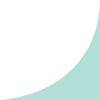Dialogue
What happens when a fundamental researcher and an oncology drug development specialist work together? Oncode Investigator Jos Jonkers (NKI) and Neil Jones (Cancer Research Horizons) have combined their skills in a new strategic alliance between Oncode Institute and Cancer Research Horizons. They pave the way for further collaborations.

Neil Jones
Cancer Research Horizons – Vice President Portfolio Generation
Jos Jonkers
NKI – Professor of Molecular Experimental Oncogenetics and Cancer Therapeutics at Leiden University, Oncode Investigator



A meeting of minds

How did the two of you meet?
Jos: The idea behind Oncode Institute is to focus on basic cancer science, yielding discoveries that might be starting points for drug discovery. For this to happen, the Business Development department constantly sets up discussions with potential partners. They had already contacted Cancer Research Horizons in 2019, but nothing concrete originated. But then they reached out to us after they heard about Oncode’s work in the field of DNA repair.
Neil: We had just spun out Artios, a company for which Jos was advising. Cancer Research Horizons is Cancer Research UK’s innovation engine for translation and commercialization. A key working method of ours is working closely with academics – we become involved but rely on building relationships to drive patient benefit. Oncode and Cancer Research Horizons have a shared vision – cancer is a global problem. We have these teams collaborating around the world in networks. Cancer Research Horizons and Oncode Institute are constantly thinking of ways to bring these together.

Let’s focus on the emerging field of DNA damage repair as a therapeutic target. How did that affect the forming of a partnership between Oncode Institute and Cancer Research Horizons?
Jos: At Oncode Institute, we research novel potential drug targets in DNA repair that can act synergistically to combat therapy resistance of tumors. We have preclinical data to suggest that combining drug targets might be an interesting space to dive into. We see a clear unmet clinical need in that space and in many cases, it precludes a strong impact on overall patient survival. We can only achieve that through smart combinations of druggable targets. For those, we need the knowledge of domains that are perpendicular to our own. Like, for instance, drug development. Normally, our findings would just yield a publication, and it would be too early to attract a pharmaceutical company.
Neil: I realized that we could reach a much broader population of patients by collaborating with Jos and his colleagues. That unmet need is what impacts people's lives. We can already see how this benefits the clinic. It seems that we are merely scratching the surface. That’s an exciting thought – we can complement Jos’ knowledge of targets, mechanisms, and models by using our expertise on taking them forward as drug targets. We bring in the drug discovery and development team, and Oncode brings in the biology. We share the vision to generate benefits for cancer patients. We now have a pilot project that is working towards a proof-of-concept point during 2022.
"A key working method of ours is working closely with academics – we become involved but rely on building relationships to drive patient benefit."
There are talks of a joint spinoff already.

Neil: We know there is a bigger opportunity in this. Our shared desire is to bring in additional investments to drive our projects forward as quickly as possible to get this towards the clinic as fast as possible. Spinoffs are often nimble in that perspective. We can see an attractive portfolio emerging, making it attractive for investors to climb aboard. Thanks to the potential of Oncode Institute, we can move this quickly towards the clinic.
Jos: Indeed, at some point, it would be great to have some sort of company structure. For me, the emphasis is on building a sufficiently broad portfolio – not only with several candidates but also with sufficient gravity per target. I think from the perspective of content. If that’s solid, the rest will follow. We have a great capacity to identify a good candidate target space in the field of DNA damage and repair. When our portfolio represents solid opportunities, money follows.
What are the personal drivers in your partnership?

Neil: I like the fact that both our institutes aim at quick action. We’re both convinced that if we commit to bringing opportunities together, based on our shared interest in DNA damage and repair, we can generate momentum, rather than first have endless discussions. There is a great complementarity – we could get into drug discovery quickly, which builds an attractive portfolio. That counts for both parties. There’s a lot of learning involved for everyone.
Jos: For me, it’s exciting to learn what’s needed for a good drug target. I very much enjoy discussions about potential opportunities, figuring out the questions we want to see addressed to decide whether a target has what it takes. The viewpoints on drug discovery I encounter during those talks with Neil are perpendicular to mine, so they bring me out of my comfort zone. For me, it’s a joy and an honor to be part of those talks. It’s informative, not only for me but also for colleagues working on this project. It's exciting for us to be on this journey where we challenge ourselves to take a wholly different perspective from what we do as fundamental researchers.
How do your teams like the cooperation?

Neil: The team effort is a critical part. Our shared vision already resulted in a good relationship between our teams. Researchers from both groups are talking to each other, helping each other out. It’s powerful to know both the mechanisms and actions – and collectively work on the benefit for the patient. Many drugs fail because there is no cooperation. But thanks to the agreement we made, our researchers have that shared ownership. That can go a long way. We can let science do the talking and keep the momentum.
Jos: There is complete mutual trust. Our way of cooperating creates a setting with plenty of room to talk about the content, rather than discussing who will be in the background or the foreground. That often makes this type of work very complicated. Often, a company is behind the steering wheel, or there is a lack of interest from higher management layers. In our partnership, it’s not about who owns which part of the research. Because of our framework agreement, we don’t need to worry about those things at all.
This alliance could be a pilot for a bigger strategic collaboration. Where does this partnership go from here?

Neil: Our alliance is for five years, but a joint committee looks into more collaboration. The first aspect would be to deliver on what we have got right now, building our portfolio of targets, to drive those forward towards the clinic. Then, we can use this portfolio as an access point, to see if we can build more in the field of DNA damage and repair. Later on, we might use that as a stepping stone for other areas of drug development. Cancer Research Horizons and Oncode Institute are capable of more collaborations – we are already discussing with experts in pediatric cancer of the Prinses Máxima Centrum. We share a vision and that’s why I hope this collaboration goes a long way.
Jos: That’s my view too. We are a piece of a larger puzzle, with our collaboration hopefully being followed by others. It would be great to expand because not every project will be successful. We will need sufficient breath in terms of a broader set of druggable candidates. Many projects will fail or will get killed, all for perfectly good reasons. But that’s why it has to be the first collaboration of many. Also, there could be an opportunity for an alignment of Oncode-PACT with Cancer Research Horizons. That sort of collaboration – building on each other’s complementarities and strengths – provides unique opportunities. They form the ideal future path.
Credits: interview by Koen Scheerders; photography by Rob ter Bekke
Did you like this story?
We have more of these! Please register below to receive our digital magazine 4 times a year and stay up to date on how we are cracking the code of cancer.
